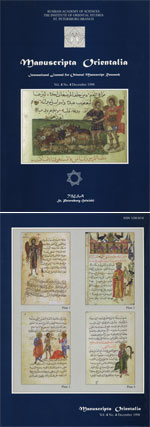|
|
| |

|

|
Jakobson V. Computer Assyriology // Manuscripta Orientalia. Vol. 4, No 4, December 1998. P. 55-59.
Assyriology is the branch of Orientalistic which studies the history, languages, and cultures of those ancient peoples which employed cuneiform writing. A specific feature of Assyriology is that it deals with a number of languages not related to one another (with the exception of Urartic and Hurritic, which belong to the same language family). Cuneiform was invented by the Sumerians at the beginning of the third millennium B.C. It was later borrowed from them by neighbouring peoples, either directly or not, who adapted it to their own languages. It is an extremely complex writing system employing several hundred signs, each of which can have several (sometimes dozens) syllabic (phonetic) and up to five or six semantic (ideographic) meanings. It is not difficult to calculate the number of variant readings, which can arise from a combination of only three or four cuneiform signs. The matter is further complicated by the absence of word divisions and punctuation marks in cuneiform — all signs were written one after the other without any spaces, divided only into lines. Fortunately, certain orthographic rules and grammatical features somewhat facilitate cuneiform reading.
Each cuneiform sign represents a combination of several wedge-shaped marks, which are vertical, horizontal or inclined. These marks were impressed by the scribe with a three-sided stick on a tablet of fresh clay which was then preserved by drying or, less frequently, by baking, as with ceramics. On rare occasion, inscriptions were made on other clay objects as well as on metal and stone. In the latter cases, they invariably imitated inscriptions on clay. At present, the world’s museums possess approximately half a million cuneiform texts of varying lengths, ranging from a few signs to thousands of lines. The number of these texts continues to grow…
 PDF-files PDF-files
The entire paper
Keywords
Manuscripta Orientalia, selected papers
|
|
|
|
Random news: Announcements |
|
A.E. Terekhov will give a public lecture, “Image of dragon in Chinese culture”, on February 7, 2024 at 17:30. |
|
Read more...
|
|
|
|
|

